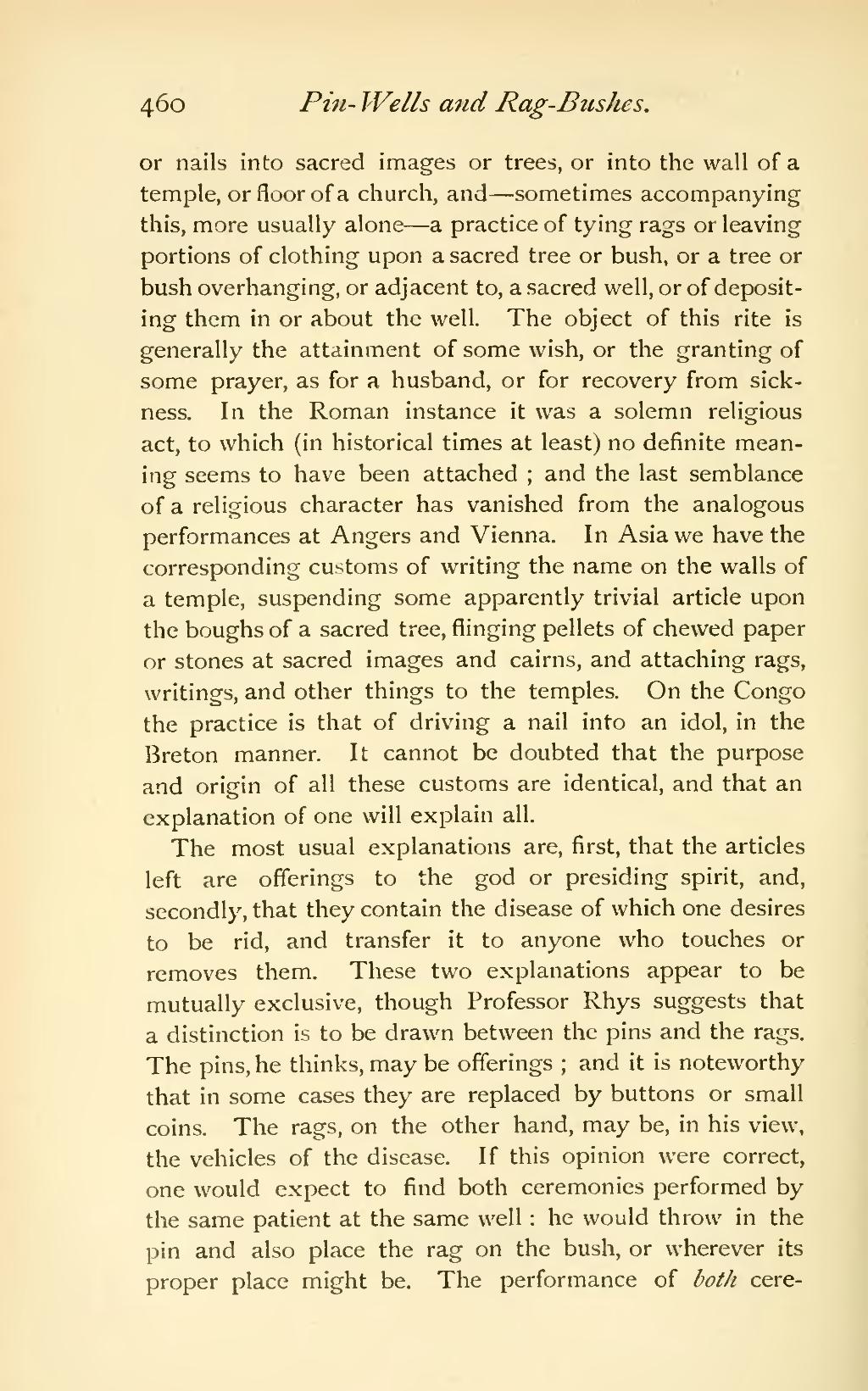or nails into sacred images or trees, or into the wall of a temple, or floor of a church, and—sometimes accompanying this, more usually alone—a practice of tying rags or leaving portions of clothing upon a sacred tree or bush, or a tree or bush overhanging, or adjacent to, a sacred well, or of depositing them in or about the well. The object of this rite is generally the attainment of some wish, or the granting of some prayer, as for a husband, or for recovery from sickness. In the Roman instance it was a solemn religious act, to which (in historical times at least) no definite meaning seems to have been attached; and the last semblance of a religious character has vanished from the analogous performances at Angers and Vienna. In Asia we have the corresponding customs of writing the name on the walls of a temple, suspending some apparently trivial article upon the boughs of a sacred tree, flinging pellets of chewed paper or stones at sacred images and cairns, and attaching rags, writings, and other things to the temples. On the Congo the practice is that of driving a nail into an idol, in the Breton manner. It cannot be doubted that the purpose and origin of all these customs are identical, and that an explanation of one will explain all.
The most usual explanations are, first, that the articles left are offerings to the god or presiding spirit, and, secondly, that they contain the disease of which one desires to be rid, and transfer it to anyone who touches or removes them. These two explanations appear to be mutually exclusive, though Professor Rhys suggests that a distinction is to be drawn between the pins and the rags. The pins, he thinks, may be offerings; and it is noteworthy that in some cases they are replaced by buttons or small coins. The rags, on the other hand, may be, in his view, the vehicles of the disease. If this opinion were correct, one would expect to find both ceremonies performed by the same patient at the same well: he would throw in the pin and also place the rag on the bush, or wherever its proper place might be. The performance of both cere-
